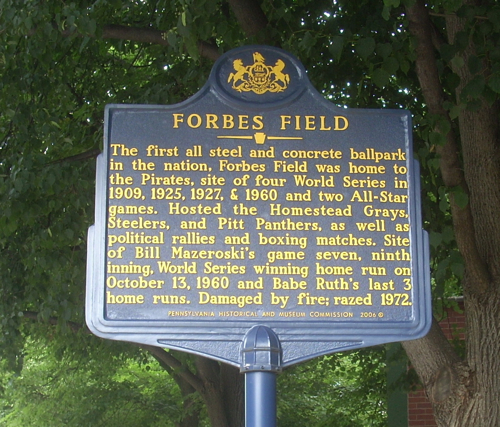
|
Forbes Field | |||||||
|
Pittsburgh, PA
| Team: Pittsburgh Pirates (NL), Homestead Grays (NNL2) | Capacity: 23,000 (1909) 35,000 (1960) |
| Opening Day: June 30, 1909 | Closing Day: JUne 28, 1970 |
| Dimensions: LF 365 CF 435 RF 300 | Surface: grass |
| Architect: Charles W. Leavitt, Jr. | Cost: $2 million |
| Demolished: July 28, 1971 | Ground Breaking: March 1, 1909 |
| Structural Engineer: Nicola Building Company |

Memorable Moments:
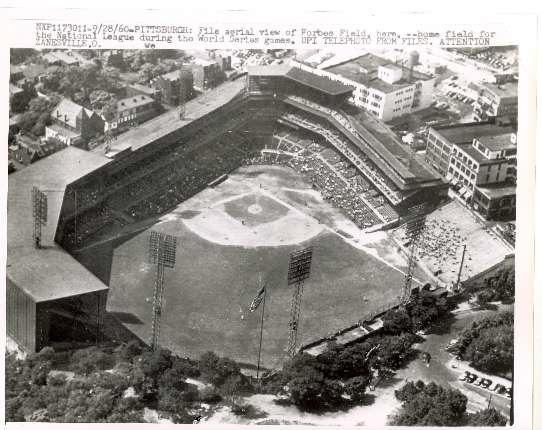
Schenley Farms, a hothouse and livery stable, was purchased by Barney Dreyfuss, the Pirates owner. The land was in the best residential section of Pittsburgh, so the ballpark had to be a thing of luxury. Before the field was leveled and the rocks were removed, on October 31, 1908, Penn defeated Carnegie Teach in a football game. When the park opened, it was something to behold. It was ornate with elevators, electric lights, telephones, ramps instead of steps, and maids in the ladies room. A season box seat cost $100 plus general admission prices, but you got a brass plaque with your name on it for your box.
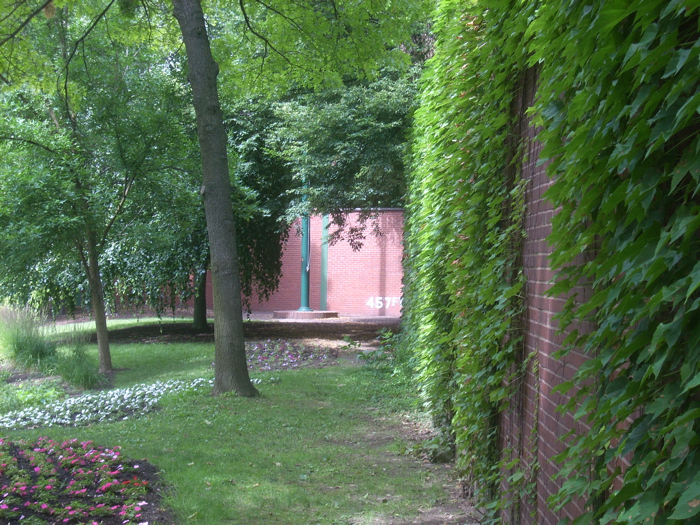
Forbes field was named for General John Forbes, an English soldier in the French and Indian War, who capture Fort Duquesne and renamed it Fort Pitt in 1758. The fourteen foot Longines clock on the left field scoreboard was out of play. If you hit it, it was a home run. During World War II, the right field screen could no be replaced due to priority given to essential items, and it looked rough. The bottom of the light tower cages and the flagpole in center (pictured above) were in play. In 1925, right field stands were built, reducing foul territory by 76.5 feet. A third deck was built in 1938 (with the elevator) called the Crow's Nest. A chicken coop wire short fence was used from 1947 to 1953 to increase home run production. It was called Greenberg Gardens (1947) and Kiner's Korner (1948-53). Green foam rubber pads on the outfield walls were the first in the majors. Wooden walls were in left and center until replaced with brick and ivy in 1946. Babe Ruth hit his final home run here, and it was the first to clear the right field roof. A plaque was installed. Fire did a lot of damage on December 24, 1970 and July 17, 1971.
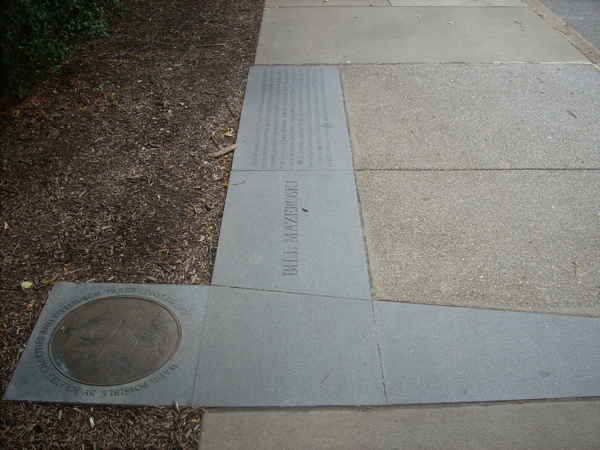
The Honus Wagner Statue, below, was erected in 1955. It is 18 feet high and weighs 1800 pounds. It was moved to Three Rivers Stadium and later PNC Park. A plaque, above, marks the spot where Bill Mazeroski's walk off, World Series winning home run, flew out of the park and over Yogi Berra's head.
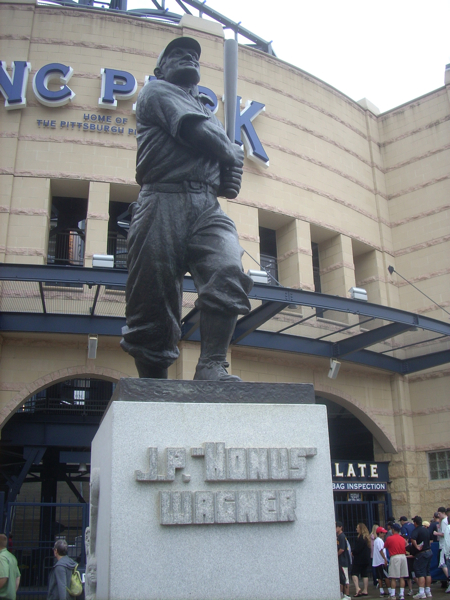
In 1971, Natt Moll, was the state inspector assigned to the demolition of this field. The job was bittersweet, because he had been the public address announcer in the 1920's. Even though Moll helped take the park down, much of it is preserved today. The University of Pittsburgh turned Forbes Field into the Forbes Quadrangle. A portion of the outfield fence, and flagpole, still remain in their original spot. Across the street, is an University building. On the floor in the hallway, under plastic, is Forbes' home plate, in the same location it always has been. Also pictured below, is a representation of what a ticket booth looked like at Forbes. If you want to see the part of the wall where Maz hit his walk off, you'll have to wander down to PNC Park. That portion of the wall is embedded in a wall on the river bank next to a statue of the second baseman.
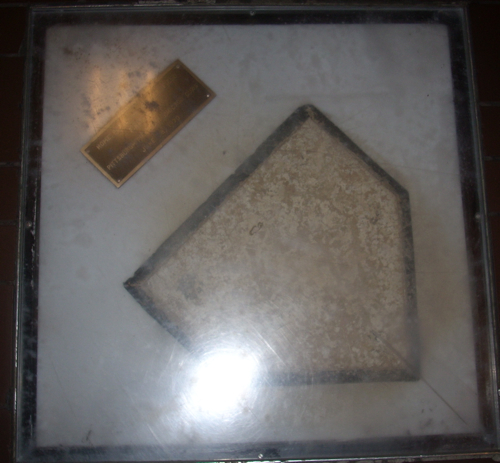
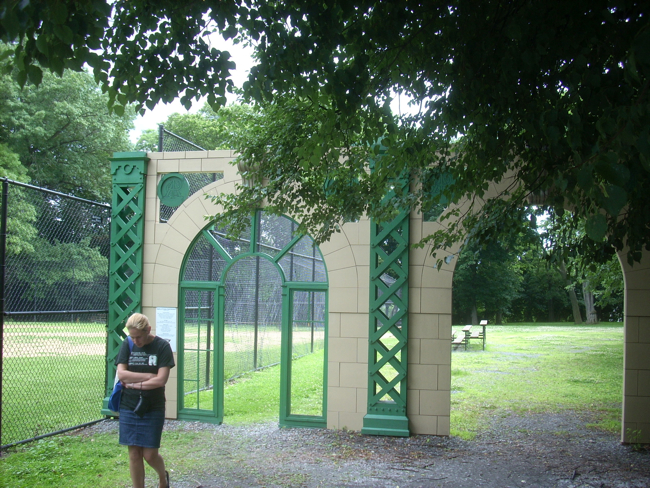
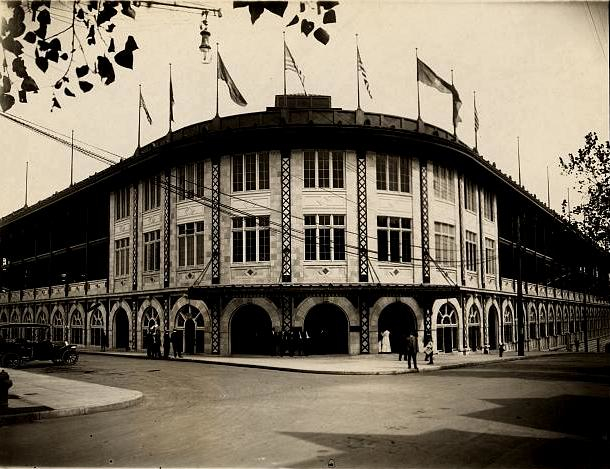
© 2011-17 Paul Healey. Photographs of the old stadium and plaque © their owners. Used without permission.